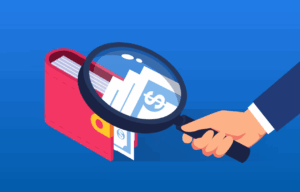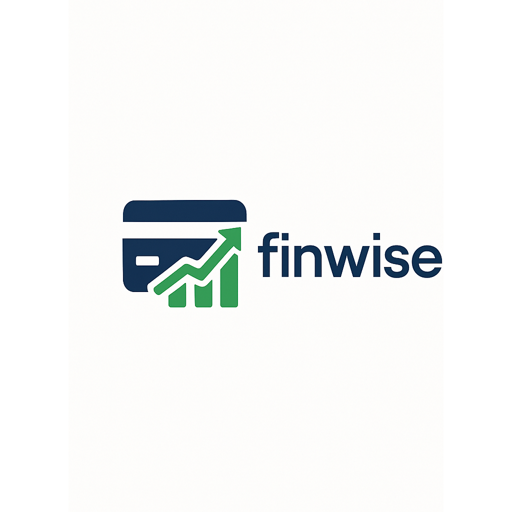Fed Interest Rate Decisions: Why They Matter
What Fed’s Emergency Rate Cut Means for Credit Cards, Loans and the U.S. Economy

When the Federal Reserve (often referred to as simply the “Fed”) cuts rates, hikes rates, or merely changes how people think about interest rates, the ripples are felt anywhere there’s money anywhere in the U.S., from Wall Street to Main Street. But why does one institution’s decision carry so much weight? Whether you are struggling with credit card debt, taking out a mortgage or investing in the stock market, knowing the Fed’s role can lead to smarter financial decisions.
In this post, we’ll take a look at why the Fed raises and lowers interest rates, how those decisions impact consumers — and particularly credit card holders — and what to expect in today’s economic environment.
What Is the Fed, and What Does It Do?
The Federal Reserve is the central bank of the United States and among its many duties, is the body responsible for the regulation of the nation’s monetary policy. One of they key tools it uses is the federal funds rate, the interest rate at which banks lend to one another overnight. Though this rate may seem distant from your wallet, it serves as a benchmark for a variety of interest rates throughout the economy.
When the Fed is ready to change it, it will affect:
Mortgage rates
Auto loan rates
Business loans
Savings yields
And perhaps most important for many consumers — credit card APRs.
Why Does the Fed Raise or Lower Rates?
The Fed raises or lowers interest rates to stimulate or cool off the economy. Let’s break it down:
To combat inflation : If prices are rising too fast (as they have in recent years), the Fed can increase interest rates. When rates are higher, borrowing is more expensive and saving is more attractive, which has the effect of slowing spending and reducing inflation.
To spur growth: When the economy is in a rut or a recession, the Fed cuts its interest rates to make borrowing less expensive and encourage borrowing, spending and investment.
The object is always the same — to balance the pursuit of maximum employment and stable prices, supported by moderate long-term interest rates.
What Fed Rate Hikes Mean for Credit Card Holders
Credit card APRs typically rise within one or two billing cycles when the Fed raises interest rates. That’s because most U.S. credit cards feature variable interest rates, which are tied to the prime rate, which in turn correlates with the federal funds rate.
Suppose the Fed raises rates by 0.25%. If your card is a variable card, you can expect to see an even greater increase in your APR — and your preexisting balance will become more expensive to carry from month to month.
Example:
If you carry a $5,000 balance on a card with a 20% APR, you’ll pay about $1,000 in interest a year. If your APR jumps to 21%, the cost of interest sinks to $1,050 per year—a substantial difference over time.
Effect on Non-Mortgage Consumer Credit
It’s not just credit cards. Here’s what happens with other popular types of credit:
Mortgages: Fixed-rate mortgages would be unaffected, but new mortgage applicants could face higher interest rates, making homeownership more costly.
Auto Loans: Again, these haven’t benefited much from the Fed rate cuts, although with the Fed going the other way, new buyers will pay more to borrow.
Personal Loans and HELOCs: These commonly carry variable rates, so current borrowers may see their monthly payments rise swiftly after a Fed decision.
How Savers Can Benefit From Higher Interest Rates
It’s not all bad news. And though credit is more expensive, savers can enjoy increasing interest rates.
When the Fed is raising rates, high-yield savings accounts, certificates of deposit (CDs) and money market funds can provide better returns.
For consumers who do not carry a lot of debt this can be an opportunity to grow savings more quickly than before.
The Stock Market and the Fed’s Moves
Wall Street is always watching the Fed with a hawk eye. Interest rate announcements are known to send markets into turmoil. Here’s why:
Higher rates can hit corporate profits (because borrowing becomes more expensive) and that usually leads to a fall in the stock market.
Falling rates, on the other hand, can lift the stock market if rates make loans cheaper and send consumer spending higher.
Investors also attempt to “read between the lines” of the Fed’s statements, searching for hints about where rates may be headed next. The words of Fed Chair Jerome Powell have the power to send global markets reeling within minutes.
Timing Is Important: Fed Meetings and the Market’s Anticipation
Interest rates are decided upon eight times a year when the Federal Reserve meets to discuss the state of the economy and whether or not interest rates should be changed. In 2025, that discussion is especially timely for the Fed as it contends with tight labor markets and continued inflation, while the banks are still carrying the overhang of concerns from the most recent bank stress test.
Markets tend to price in expectations even before a meeting happens. That is why sometimes the Fed increases rates and stocks rise — perhaps investors had already priced in a larger hike. The element of surprise depends as much on the number as on the actual figure.
What Should Consumers Do Now?
Consumers in 2025 will need to think smart about their money since interest rates will be historically high:
Pay Down High-Interest Debt
Concentrate on the credit cards and variable-rate loans. Each Fed hike costs you more to carry a balance.
Consider Balance Transfers
Seek a 0% APR introductory promotion to consolidate debt and avoid compounding interest.
Build an Emergency Fund
Higher savings yields mean this is an excellent time to park money in a high-yield savings account.
Lock In Fixed Rates
If you are shopping for a loan (for a car, for your personal use, for a mortgage), try to get a fixed rate now before rates rise even further.
The Long-Term Perspective
Although Fed moves, even in the short term, can seem abrupt, it’s worth remembering that monetary policy is a long game. Rate increases now are intended to bring stability later. Indeed, the Fed could well end up reversing itself and cutting rates again — something that could happen if inflation were to cool or economic growth were to falter.
Consumers that remain educated and proactive will be in the greatest position to take advantage in up and down rate environments. It’s less about reacting to news headlines than constructing a resilient financial strategy.
Final Thoughts
Interest rates set by the Federal Reserve have important effects on the economy. From the price of your credit card to the return on your savings, Fed policy touches your financial life in very real ways.
Never has it been more important than today to manage your money wisely in this high-rate environment. Take note of what the Fed is saying, but it’s even more important to concentrate on what you can control — your budget, your debt, your financial goals.
Our Post

High Interest Rates, Credit Cards and the U.S. Consumer: What to Know in 2025
The Note: How Decelerating U.S. Economic Growth Affects Using Consumer Credit


